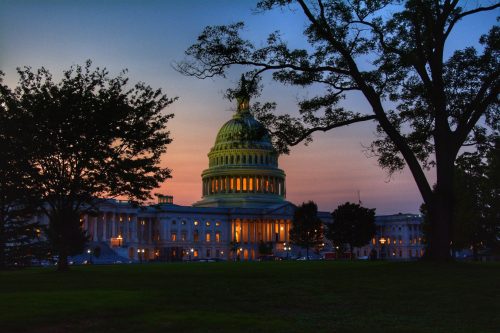INFLATION REDUCTION ACT OF 2022
- $369 billion for climate and clean energy
- Expected to reduce US carbon emissions about 40% by 2030
- 725 page law
Provisions (from summary on senate.gov):
- Policies to reduce consumer energy costs
- $9 billion rebates for low income residents to retrofit homes & buy efficient appliances
- 10 years consumer tax credits for homes to become energy efficient, & use clean energy
(make heat pumps, rooftop solar, electric HVAC, electric water heaters affordable)
- $4,000 consumer tax credit for lower/middle income individuals to buy used clean vehicles
- $7,500 tax credit to buy new clean vehicles
- $1 billion grant to make affordable housing more energy efficient
- American Energy Security and Domestic Manufacturing – $60 billion to onshore clean energy manufacturing
- Production tax credits for US manufacture of solar panels, wind turbines, batteries, critical materials (estimated $30 billion)
- $10 billion investment tax credit to build clean energy tech manufacturing facilities (example: to make electric vehicles, wind turbines, solar panels)
- $500 million in Defense Production Act for heat pumps & critical materials processing
- $2 billion to retool existing auto factories to make clean vehicles
- Up to $20 billion loans to build new clean vehicle manufacturing facilities
- $2 billion for National Labs to accelerate breakthrough energy research
- Decarbonize the economy
- Tax credits for clean sources of electricity and energy storage and roughly $30 billion in targeted grant and loan programs for states and electric utilities to accelerate the transition to clean electricity.
- Tax credits and grants for clean fuels and clean commercial vehicles to reduce emissions from all parts of the transportation sector.
- Grants and tax credits to reduce emissions from industrial manufacturing processes, including almost $6 billion for a new Advanced Industrial Facilities Deployment Program to reduce emissions from the largest industrial emitters like chemical, steel and cement plants.
- Over $9 billion for Federal procurement of American-made clean technologies to create a stable market for clean products, including $3 billion for the U.S. Postal Service to purchase zero-emission vehicles.
- $27 billion clean energy technology accelerator to support deployment of technologies to reduce emissions, especially in disadvantaged communities.
- A Methane Emissions Reduction Program to reduce the leaks from the production and distribution of natural gas.
- Community Investment and Environmental Justice ($60 billion)
- The Environmental and Climate Justice Block Grants, funded at $3 billion, invest in community led projects in disadvantaged communities and community capacity building centers to address disproportionate environmental and public health harms related to pollution and climate change.
- The Neighborhood Access and Equity Grants, funded at $3 billion, support neighborhood equity, safety, and affordable transportation access with 4 competitive grants to reconnect communities divided by existing infrastructure barriers, mitigate negative impacts of transportation facilities or construction projects on disadvantaged or underserved communities, and support equitable transportation planning and community engagement activities.
- Grants to Reduce Air Pollution at Ports, funded at $3 billion, support the purchase and installation of zero-emission equipment and technology at ports.
- $1 billion for clean heavy-duty vehicles, like school and transit buses and garbage trucks.
- Some of the previously mentioned programs that focus on disadvantaged and low-income communities are also important to environmental justice, like the technology accelerator and consumer home energy rebate programs. In addition, the many of the clean energy tax credits include either a bonus or set-aside structure to drive investments and economic development in disadvantaged communities.
- Farmers, Forestland Owners and Resilient Rural Communities
- More than $20 billion to support climate-smart agriculture practices.
- $5 billion in grants to support healthy, fire resilient forests, forest conservation and urban tree planting.
- Tax credits and grants to support the domestic production of biofuels, and to build the infrastructure needed for sustainable aviation fuel and other biofuels.
- $2.6 billion in grants to conserve and restore coastal habitats and protect communities that depend on those habitats.







 2024-2025 Scholarship recipients being recognized at our June WPNA meeting.
Please support our scholarship effort by contributing below through our secure PayPal site.
2024-2025 Scholarship recipients being recognized at our June WPNA meeting.
Please support our scholarship effort by contributing below through our secure PayPal site.



